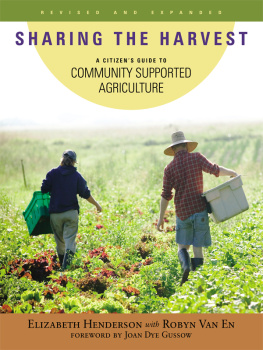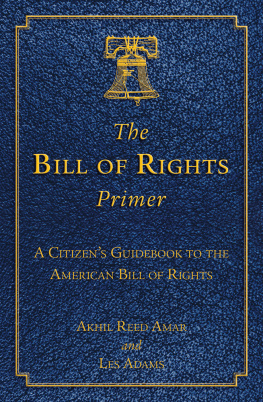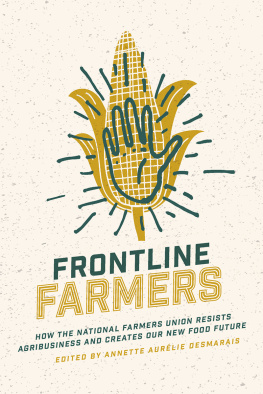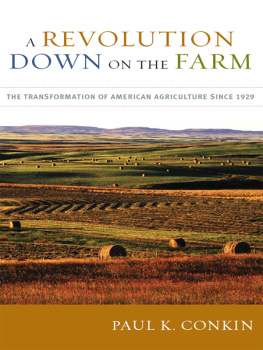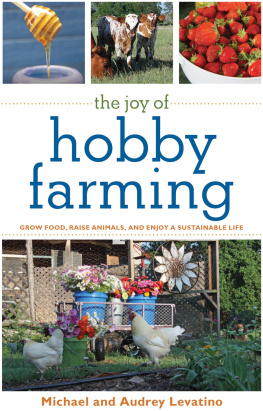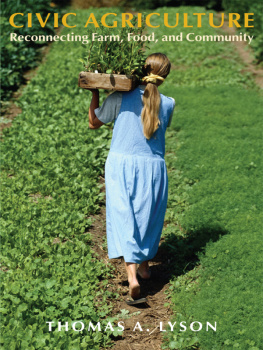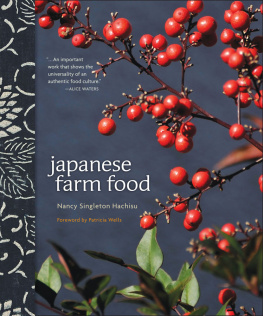FOOD
FIGHT
THE CITIZENS GUIDE TO THE
NEXT FOOD AND FARM BILL
Daniel Imhoff
Foreword by Michael Pollan
Introduction by Fred Kirschenmann
Contemporary Issues Series

A Watershed Media Book
Healdsburg, California
Second Edition Copyright 2012 by Daniel Imhoff.
All rights reserved under International and Pan-American Copyrights Conventions. No part of this book may be reproduced in any form or by any means without permission in writing from the publisher. No copyright claim is made on the following essays that are printed or reprinted with permission from their author/publishers:
Michael Pollan, Dont Call it the Farm Bill; Call it the Food Bill,
The Nation, September 11, 2006.
Fred Kirschenmann, A Food and Farm Bill for the 21st Century.
Laura Sayre, Why New Zealanders Dont Like Farm Subsidies, in Farming without Subsidies:
Some Lessons from New Zealand, New Farm, March 2003.
P.J. Huffstutter, Farm Insurance Fraud is Cheating Taxpayers Out of Millions, Los Angeles Times, February 6, 2010.
Timothy Wise, Who Pays for Dumping in Developing Countries? Triple Crisis, July 29, 2010.
Melanie Mason, Food Stamps For Good Food, The Nation, March 10, 2011.
Jim Robbins, Safeguarding Sage Grouse and Their Elaborate Courtship Dance, New York Times, February 7, 2011.
Wendell Berry and Wes Jackson, A 50-Year Farm Bill, New York Times, January 4, 2009.
Published by Watershed Media
513 Brown Street, Healdsburg, California 95448
707.431.2936
www.watershedmedia.org
Library of Congress Cataloging-in-Publication Data available upon request from the publisher.
Cover Design: Chris Blum
ISBN-13 978-0-9846304-0-0
Second Edition
10 9 8 7 6 5 4 3 2 1
Table of Contents
by Michael Pollan
by Fred Kirschenmann
by Daniel Imhoff
Charts & Tables
Figure 19. Turning Points in Food and Farm Policy
Acknowledgments
This book is dedicated to everyone working toward a world in which good tasting, healthy, and environmentally sustainable food becomes a cornerstone of our democratic society. Many people contributed to the update of this book, which emerged as a much relied upon resource in educating the public during the last Farm Bill fight. I sincerely thank Marjorie Roswell for her ongoing support of Watershed Media, as well as the Garfield Foundation and the 11th Hour Project, who have contributed so generously to our work. I express my absolute admiration for our editor, Robin Rauzi. Emmett Hopkins labored over early revisions and left his mark on the National Security and Who Will Grow Our Food chapters. Hallie Detrick comfortably wore numerous hats: editor, fact checker, proofreader and production coordinator. Jane Mackay served as our line editor for the manuscript. Elanor Starmer helped reframe the Family Farms to Mega Farms and Who Gets the Money chapters. Thanks to Becca Klein, Marlena White, Kate Clancy and Roni Neff at the Center for a Livable Future and to Joel Kimmons of the CDC for their comments on the public health chapters. Michael Bomford of Kentucky State University set us straight on the complexity of energy issues. Randy Gray, my long-time tutor about USDA conservation programs, offered insightful comments on that chapter. Thomas Forster, Gus Schumacher and Michael Dimock shared their expertise on the emerging cross sections of public health and urban and rural agricultural partnerships. Martha Noble and Ferd Hoefner at the National Sustainable Agriculture Coalition frequently shared their ears and expertise, Martha drafting an update on the GIPSA rule that was later revised. Anti-CAFO activist Lynn Henning provided information about ongoing EQIP programs that continue to pay to keep industrial animal factories in business. Ben Lilliston and Jim Kleinschmit of the Institute for Agriculture and Trade Policy advised us on trade issues. Brise Tencer and Bob Scowcroft shared their experience on the Organics Fair Share effort. I am indebted to the numerous organizations that follow these matters closely, including farmpolicy.com, Food and Water Watch, the Environmental Working Group, AGree, Dan Morgan and the German Marshall Fund, the Center for Rural Affairs, Institute for Agriculture and Trade Policy, Food Democracy Now, Roots of Change, and many others. Thanks to Chris Blum and Kris Costill for our updated cover and of course to our graphic designer Timothy Rice, who pulled everything together. I must always thank my wife, Quincey, and the staff and Board of Directors of Watershed Media who guide the ship on our yearly journeys. My humble and sincere apologies if I forgot anyone.
Dan Imhoff, November 2011
I tell you frankly that this is a new and untrod path, but I tell you with equal frankness that an unprecedented condition calls for the trial of new means to rescue agriculture. If a fair administrative trial of it is made and it does not produce the hoped-for results I shall be the first to acknowledge it and advise you.
Franklin Delano Roosevelt, March 16, 1933,
New Means to Rescue Agriculture, speech to Congress
Men who can graft the trees and make the seed fertile and big can find no way to let the hungry people eat their produce. Men who have created new fruits in the world cannot create a system whereby their fruits may be eaten. The works of the roots of the vines, of the trees, must be destroyed to keep up the price, and this is the saddest, bitterest thing of all. A million people hungry, needing the fruitand kerosene sprayed over the golden mountains.
There is a crime here that goes beyond denunciation. There is a sorrow here that weeping cannot symbolize. There is a failure here that topples all our success. The fertile earth, the straight tree rows, the sturdy trunks, and the ripe fruit. And children dying of pellagra must die because a profit cannot be taken from an orange. And coroners must fill in the certificatesdied of malnutritionbecause the food must rot, must be forced to rot.
John Steinbeck, The Grapes of Wrath
The United States governments agricultural policy, or non-policy, since 1952 has merely consented to the farmers predicament of high costs and low prices; it has never envisioned or advocated in particular the prosperity of farmers or farmland, but has only promised cheap food to consumers and survival to the larger and more efficient farmers who supposedly could adapt to and endure the attrition of high costs and low prices. And after each inevitable wave of farm failures and the inevitable enlargement of the destitution and degradation of the countryside, there have been the inevitable reassurances from government propagandists and university experts that American agriculture was now more efficient and that everybody would be better off in the future.
Wendell Berry, The Total Economy, Citizenship Papers
Michael Pollan
Every five to seven years, the president of the United States signs an obscure piece of legislation that determines what happens on a couple hundred million acres of private property in America, what sort of food Americans eat (and how much it costs), and, as a result, the health of our population. In a nation consecrated to the idea of private property and free enterprise, you would not think any piece of legislation could have such far-reaching effects, especially one about which so few of useven the most politically awareknow anything. But in fact, the American food system is a game played according to a precise set of rules that are written by the federal government with virtually no input from any but a handful of farm-state legislators. Nothing could do more to reform Americas food system, and by doing so, improve the condition of Americas environment and public health, than if the rest of us were to weigh in.
Next page

